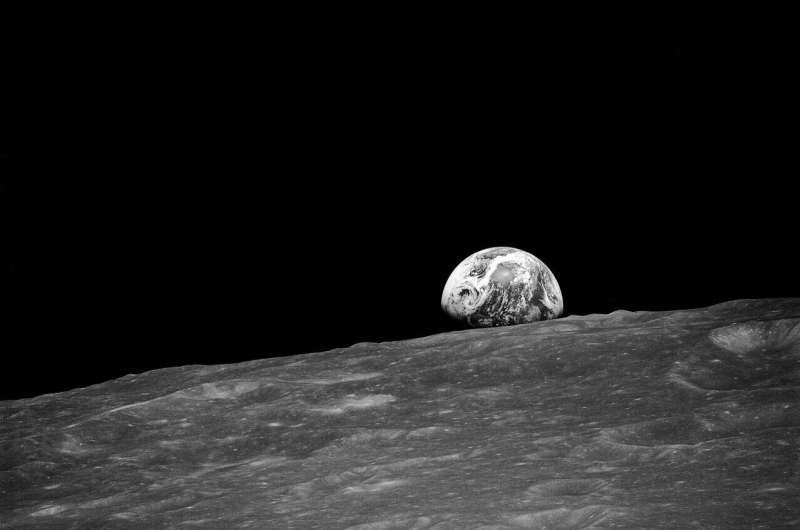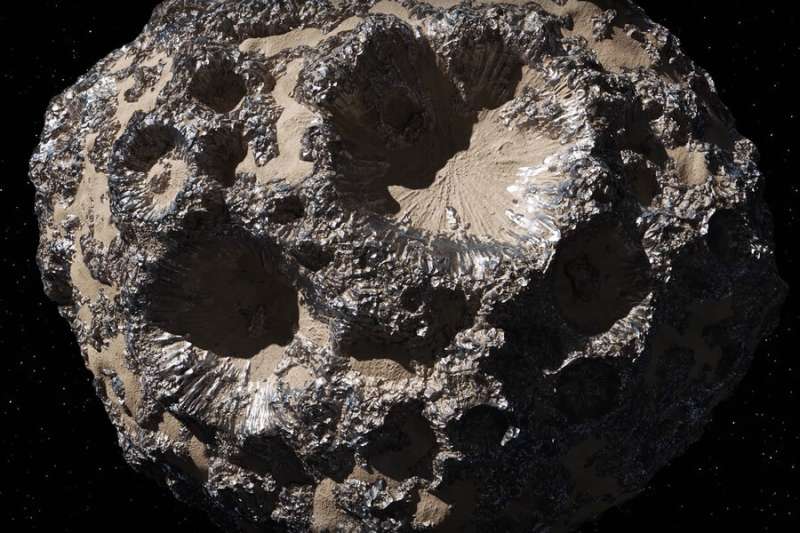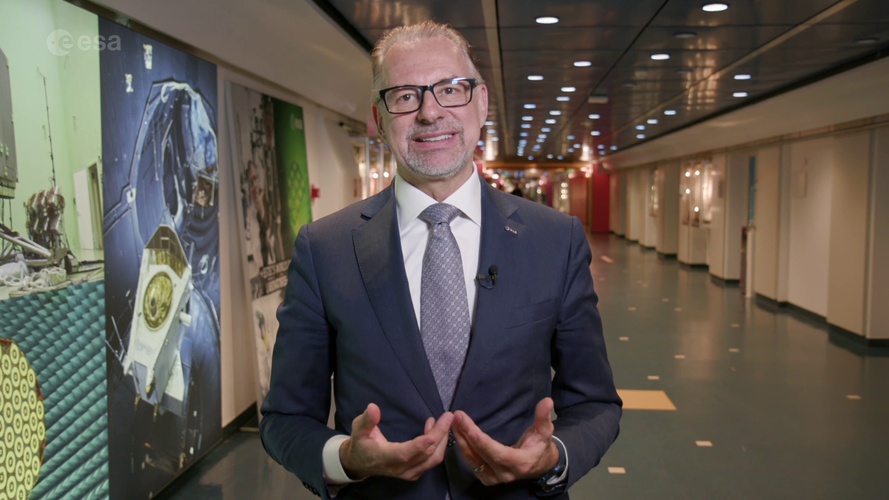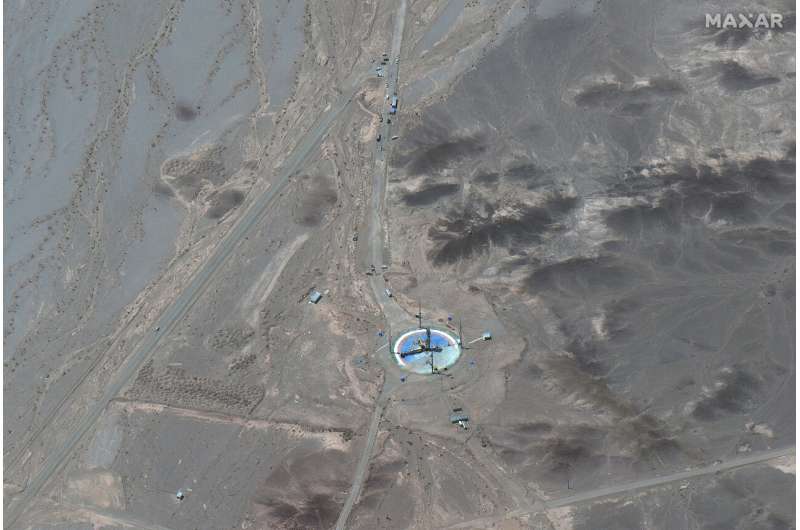Retired four-star general John Hyten joins Blue Origin as strategic advisor
Wednesday, 15 June 2022 17:00
Blue Origin announced June 15 that former vice chairman of the Joint Chiefs of Staff John Hyten, will join the company as executive director of the firm’s Club for the Future foundation and as a strategic advisor.
NASA will fly your name around the moon on historic mission. Here's how to sign up
Wednesday, 15 June 2022 15:26
Space travel is clearly for astronauts and the super rich, but NASA has found a way the rest of us can claim our spot among the cosmos.
"You can send your name to the Moon," agency officials wrote in a June 12 Facebook post.
"How? Sign up to get your boarding pass and join the nearly 3 million 'passengers' flying around the Moon aboard #Artemis I this year."
Names can be added to the list by visiting Nasa.gov/wearegoing.
NASA says the names of all 3 million "passengers" will circle the moon on a flash drive aboard the Orion spacecraft and the trip will cover 1,300,000 miles.
While that definitely qualifies as cheap seats, the occasion will be historic at multiple levels.
NASA says the uncrewed Artemis I qualifies as our first step toward building "a long-term human presence at the Moon for decades to come."
"The flight paves the way toward landing the first woman and the first person of color on the Moon!" NASA reports.
"We will collaborate with commercial and international partners and establish the first long-term presence on the Moon.
New maps of asteroid Psyche reveal an ancient world of metal and rock
Wednesday, 15 June 2022 15:18
Later this year, NASA is set to launch a probe the size of a tennis court to the asteroid belt, a region between the orbits of Mars and Jupiter where remnants of the early solar system circle the sun. Once inside the asteroid belt, the spacecraft will zero in on Psyche, a large, metal-rich asteroid that is thought to be the ancient core of an early planet. The probe, named after its asteroid target, will then spend close to two years orbiting and analyzing Psyche's surface for clues to how early planetary bodies evolved.
Ahead of the mission, which is led by principal investigator Lindy Elkins-Tanton, planetary scientists at MIT and elsewhere have now provided a sneak peak of what the Psyche spacecraft might see when it reaches its destination.
Op-ed | Protecting the Health, Safety, and Comfort Of Civilians in the Commercialization of Space
Wednesday, 15 June 2022 15:01
Until recently, with several exceptions, the only travelers in space have been career astronauts. Most stakeholders envision that space will be populated in the coming decades by average civilians who will travel, live and work in space.
The Road to CM22 – Europe’s Space Ambition
Wednesday, 15 June 2022 15:00 Video:
00:02:03
Video:
00:02:03
ESA’s Council at Ministerial level will take place in November 2022, a crucial milestone as Europe sets out its ambitions and plans for space activities in the coming years and decades.
NASA, ESA discuss sending first European to moon
Wednesday, 15 June 2022 14:15
The European Space Agency and NASA on Wednesday talked up the prospect of putting the first European on the moon, as they signed a deal strengthening collaboration for future lunar exploration.
The space agencies had already agreed that three European astronauts would fly on the Orion spacecraft to NASA's Gateway, a space station that will orbit the moon as part of the Artemis program.
Now it seems one of those astronauts will go a step further.
"We look forward to having an ESA astronaut join us on the surface of the moon and continuing to build on our longstanding, critical partnership," NASA Administrator Bill Nelson said after attending an ESA council meeting in the Netherlands.
"NASA is counting on cooperation with ESA to propel exploration of the moon through the Artemis program," Nelson said in a statement, adding that "the European Service Module is the powerhouse of the Orion spacecraft".
The agencies also signed a deal on the Lunar Pathfinder, a planned communications satellite being built by British firm SSTL.
Iran says rocket launch coming after photos show preparation
Wednesday, 15 June 2022 12:04
FAA requires SpaceX to make environmental changes to Starbase in Texas
Wednesday, 15 June 2022 11:52 The Federal Aviation Administration on Monday said SpaceX will be required to make more than 75 changes to the orbital launch program at its Starbase launch site in Texas after determining there would be some environmental impacts to the surrounding area.
Elon Musk's SpaceX must obtain either an experimental permit or a vehicle operator license from the FAA for Starship and Super Heavy
The Federal Aviation Administration on Monday said SpaceX will be required to make more than 75 changes to the orbital launch program at its Starbase launch site in Texas after determining there would be some environmental impacts to the surrounding area.
Elon Musk's SpaceX must obtain either an experimental permit or a vehicle operator license from the FAA for Starship and Super Heavy Air-breathing hypersonic weapon delivers value and performance
Wednesday, 15 June 2022 11:52 Two core technologies are at the heart of the U.S. pursuit of hypersonic weapons, or those that travel Mach 5 or faster: scramjets, which derive propulsion from the air around them, and boost-glide systems, which use a rocket motor to reach the edge of space and then descend to their target.
Raytheon Missiles and Defense, a Raytheon Technologies business, is making significant investments
Two core technologies are at the heart of the U.S. pursuit of hypersonic weapons, or those that travel Mach 5 or faster: scramjets, which derive propulsion from the air around them, and boost-glide systems, which use a rocket motor to reach the edge of space and then descend to their target.
Raytheon Missiles and Defense, a Raytheon Technologies business, is making significant investments Amsterdam physicists build an atom laser that can stay on forever
Wednesday, 15 June 2022 11:52 Imagining our everyday life without lasers is difficult. We use lasers in printers, CD players, pointers, measuring devices, and so on. What makes lasers so special is that they use coherent waves of light: all the light inside a laser vibrates completely in sync.
Meanwhile, quantum mechanics tells us that particles like atoms should also be thought of as waves. As a result, we can build '
Imagining our everyday life without lasers is difficult. We use lasers in printers, CD players, pointers, measuring devices, and so on. What makes lasers so special is that they use coherent waves of light: all the light inside a laser vibrates completely in sync.
Meanwhile, quantum mechanics tells us that particles like atoms should also be thought of as waves. As a result, we can build ' Airbus brings leading-edge digital capabilities to Multi-Domain Military Operations
Wednesday, 15 June 2022 11:52 In today's world of rapidly evolving global security challenges, the ability to collect, analyse and utilise data for decision-making and response is more important than ever.
By applying its leading-edge digital capabilities to Multi-Domain Military Operations, Airbus provides seamless integration solutions that connect mission-critical military platforms and systems worldwide across all
In today's world of rapidly evolving global security challenges, the ability to collect, analyse and utilise data for decision-making and response is more important than ever.
By applying its leading-edge digital capabilities to Multi-Domain Military Operations, Airbus provides seamless integration solutions that connect mission-critical military platforms and systems worldwide across all Study reveals how some high-energy particle 'jets' lose energy
Wednesday, 15 June 2022 11:52 Scientists studying particle collisions at the Relativistic Heavy Ion Collider (RHIC) have revealed how certain particle-jets lose energy as they traverse the unique form of nuclear matter created in these collisions. The results, published in Physical Review C, should help them learn about key "transport properties" of this hot particle soup, known as a quark-gluon plasma (QGP).
"By looki
Scientists studying particle collisions at the Relativistic Heavy Ion Collider (RHIC) have revealed how certain particle-jets lose energy as they traverse the unique form of nuclear matter created in these collisions. The results, published in Physical Review C, should help them learn about key "transport properties" of this hot particle soup, known as a quark-gluon plasma (QGP).
"By looki You can hear every event twice in a three-dimensional quantum gas
Wednesday, 15 June 2022 11:52 If you could immerse yourself in a quantum fluid, you would hear every event twice, because they support two sound waves with different speeds.
The researchers in their experiment have realized this remarkable property for the first time in a three-dimensional quantum gas, instead of a quantum liquid. They achieved this result through cooling a gas of potassium atoms trapped by laser beams
If you could immerse yourself in a quantum fluid, you would hear every event twice, because they support two sound waves with different speeds.
The researchers in their experiment have realized this remarkable property for the first time in a three-dimensional quantum gas, instead of a quantum liquid. They achieved this result through cooling a gas of potassium atoms trapped by laser beams Emulator reveals the intricacies of light behavior in complex evolving systems
Wednesday, 15 June 2022 11:52 University of Central Florida researchers are part of a team who have revealed, for the first time, the intricacies of how light behaves in advanced dynamical optical systems with configurations known as non-Hermitian arrangements.
In non-Hermitian systems, allowed energy values create self-intersecting surfaces with a unique topology and branch points, which are known as exceptional point
University of Central Florida researchers are part of a team who have revealed, for the first time, the intricacies of how light behaves in advanced dynamical optical systems with configurations known as non-Hermitian arrangements.
In non-Hermitian systems, allowed energy values create self-intersecting surfaces with a unique topology and branch points, which are known as exceptional point Elusive particle discovered in a material through tabletop experiment
Wednesday, 15 June 2022 11:52 An interdisciplinary team led by Boston College physicists has discovered a new particle - or previously undetectable quantum excitation - known as the axial Higgs mode, a magnetic relative of the mass-defining Higgs Boson particle, the team reports in the online edition of the journal Nature.
The detection a decade ago of the long-sought Higgs Boson became central to the understanding of
An interdisciplinary team led by Boston College physicists has discovered a new particle - or previously undetectable quantum excitation - known as the axial Higgs mode, a magnetic relative of the mass-defining Higgs Boson particle, the team reports in the online edition of the journal Nature.
The detection a decade ago of the long-sought Higgs Boson became central to the understanding of 